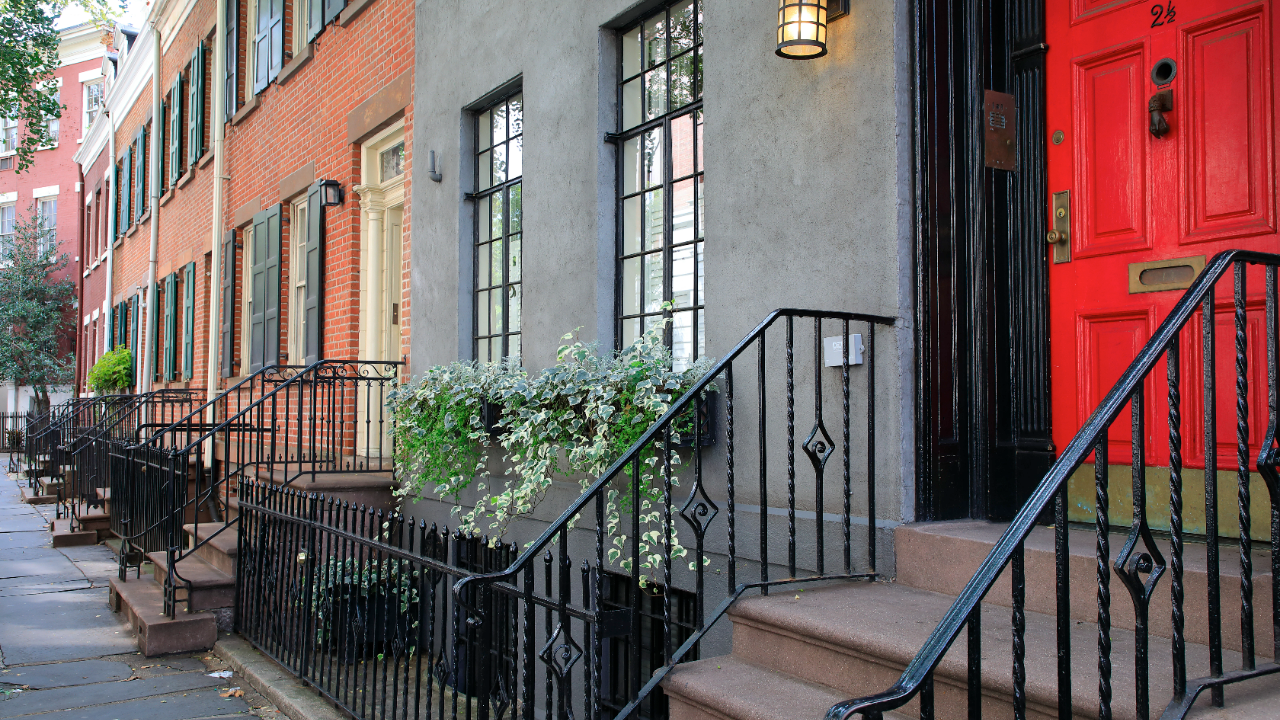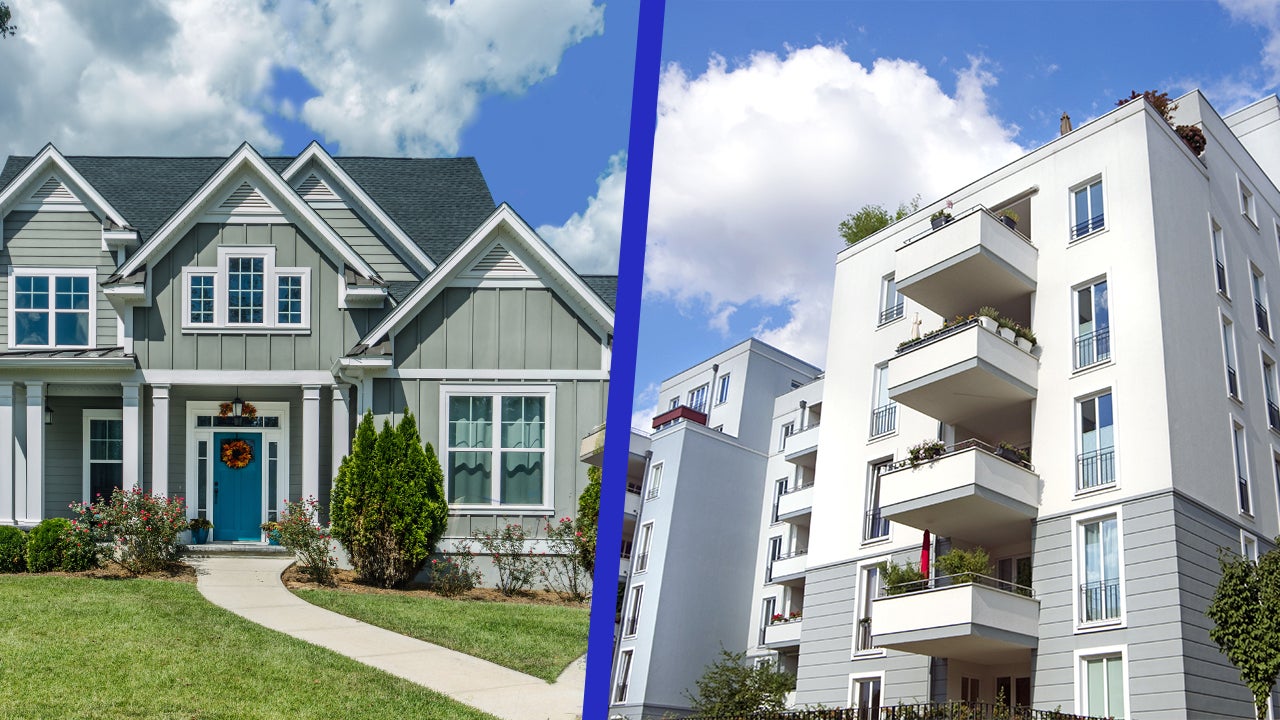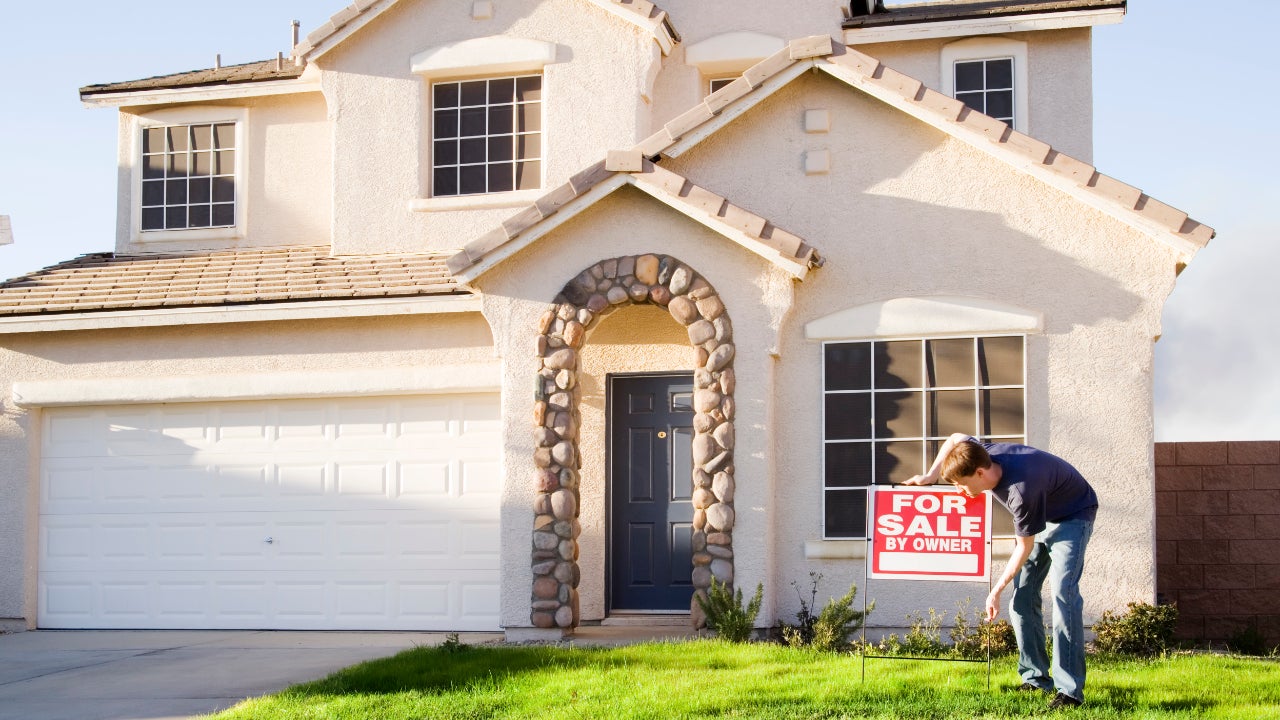What is a townhouse, and who are they best for?




Everything old is new again — and that adage certainly applies to townhouses. This venerable form of housing originated in densely populated cities but can now also be found in suburbs and exurbs all over the U.S.
And while their popularity has ebbed and flowed over the decades, there are signs that townhouses are on the upswing. In 2024, townhouse construction outpaced all other forms of single-family housing, increasing by 10 percent from the previous year, according to an analysis from the National Association of Home Builders. They made up 19 percent of single-family housing starts in the fourth quarter alone, the report found. They can also be a great option for homebuyers looking to buy on a budget. Here’s the lowdown on townhouses.
What is a townhouse?
The name usually applies to a style of small-footprint, multi-floor home that shares one or two walls with adjacent properties, often with a tall and narrow silhouette. Regardless of whether it’s attached on one side or both, a townhouse has its own individual entrance, and typically a small front lawn and/or backyard as well. End units — meaning units attached on only one side — typically have more windows and are therefore more desirable, and more costly.
Townhouses can be single-family homes or multi-family homes. In the latter case, the individual floors are broken into individual apartments. Many historic townhouses that were built to house just one family have now been divided up this way.
As the name suggests, townhouses were originally designed for towns — that is, high-density urban environments. Today, townhouses exist in cities, on the outskirts of cities and even in suburban areas. In the latter, they are often part of a distinct community that has its own homeowners association.
Who are they best for?
Townhouses represent a nice cross between a fully detached home and an apartment. Many types of homeowners can benefit from townhouses, but they’re a particularly good option for first-time homebuyers and small households of just one or two people. For example, a young first-time buyer on a budget might choose a newly built townhouse within city limits, so they don’t have to sacrifice location to become a homeowner. Many townhouses in big cities are situated in historic neighborhoods, so they can actually be a savvy way to get into a desirable zip code without breaking the bank.
Pros and cons of townhouse living

Pros
- Lower cost: A townhouse is usually less expensive than a detached home in the same area, even if they have similar square footage. “You can get a lot of space close to the cities when you’re only paying for the house and not the acreage,” says Ben Hoefer, a broker with John L. Scott Real Estate in Seattle. “It can be a cost-effective way to get more of what you want.”
- Less maintenance: The smaller size of a townhouse means that it requires less upkeep than a freestanding home, especially in terms of yard work. And if there’s an HOA, it will likely take care of the exterior maintenance on the property.
- Amenities: Townhouses built as part of a development often include access to shared facilities, such as a pool, gym or clubhouse. The care and maintenance of these is typically covered by HOA fees.

Cons
- HOA rules and fees: Some people don’t like to live with the restrictions often put in place by an HOA, which might include rules about exterior paint colors, mailboxes, landscaping choices and even what kind of pets you’re allowed to have. HOAs also charge monthly fees, so you’ll need to factor that expense into your budget.
- Noise and privacy issues: Since you’ll be in close proximity to your neighbors, you might be able to hear and see them more than you’d like — and vice versa.
- Multiple floors: Managing multiple flights of stairs on a daily basis may not be sustainable for everyone. “Townhouses are usually pretty vertical,” says Paul Gorney, a broker with eXp Realty in Chicago. “It can be an issue for some older homeowners.”
5 tips if you’re considering a townhouse
- Examine your budget: As with any home purchase, you’ll need to ensure that you can comfortably afford a townhouse before you start shopping for one. Make sure your budget factors in not only the cost of the property itself but also your closing costs and any HOA payments, if applicable.
- Make a must-have list: What exactly do you want from the space, in terms of bedroom size, layout and other factors? With a townhouse, it’s important to also consider what you’d like in the community: Fitness facilities? Good parking? Opportunities for socializing? A less-restrictive set of rules?
- Visit in person: See if it’s possible to take a tour of any shared amenities and common areas, noting how well maintained and how crowded they are. When you’re touring actual units, listen carefully to see how much sound travels from next door. You might even want to talk to some potential neighbors if you can. Ask them what they like about living there and if there are any issues you should know about.
- Read the HOA rules: Make sure you’re comfortable with a community’s HOA rules — and fees — before you make an offer on a home there. “Some people want more restrictions and a more uniform look throughout the community,” Hoefer says. “Some people want more freedom. The good news is that there are lots of options from different HOAs, so you can find the right one for you.”
- Think long-term: How long do you intend to live here? While a townhouse may make sense for you now, multi-floor living may not work at all stages of life. If you’re planning to expand your family or are worried about your mobility, consider your future and when you might be ready to move.
Find other housing types
| House type | Who it’s right for |
|---|---|
| Apartment | Apartments typically mean you’re renting instead of owning, so there is no down payment (other than a security deposit or move-in fee) required. They are suited for anyone who wants the flexibility to move or is looking to live in a prime location near shopping, restaurant and entertainment centers. |
| Condominium | Condos appeal to those looking for a lower-maintenance living, home with a sense of security, opportunities to be social with neighbors, among other factors. |
| Townhouse | Townhouses are a particularly good option or first-time homebuyers or other budget-minded buyers who want more space than typically comes with a condo. |
| Modular home | Modular homes are enticing to empty-nesters looking to downsize, people looking for backyard units like tiny homes or families looking to upgrade their dated properties in nice but expensive neighborhoods. |
| Single-family home | Single-family homes are best for large households who prefer a huge yard and plenty of room to spread out. |
| Multi-family home | Multi-family homes are good for those who are interested in getting into real estate investing and are comfortable with the added responsibility and time commitment that comes with being a landlord. |
| Bungalow home | At between 1,000 and 2,000 square feet, bungalows are a great option for young buyers looking for a starter home or older buyers hoping to downsize in a home without stairs. They’re also good for people who want the single-family home lifestyle without managing a huge property. |
| Co-op | Co-ops are most often found in major cities, and they can be good for those looking for security or neighbors who largely adhere to the building’s rules and policies. |
| Patio home | Typically capped at one-and-a-half stories and part of a larger association, patio homes are best for homeowners who don’t want to deal with stairs or maintenance. |
| Ranch home | Ranch homes are ideal for anyone who prefers single-story living. |
Why we ask for feedback Your feedback helps us improve our content and services. It takes less than a minute to complete.
Your responses are anonymous and will only be used for improving our website.
You may also like

The history of home (un)affordability

Housing options that redefine what ‘home’ means

Condo vs. house: Which is best for you?

